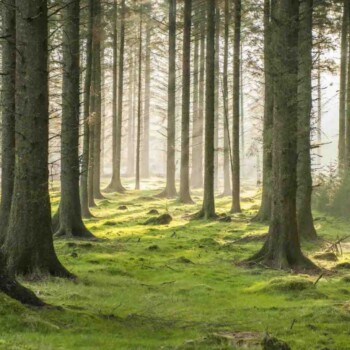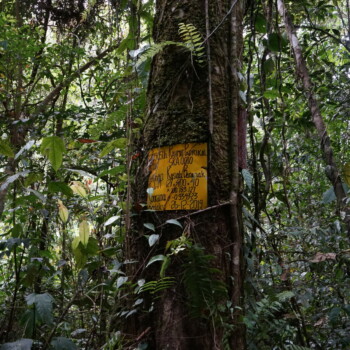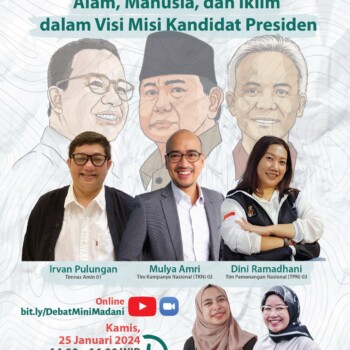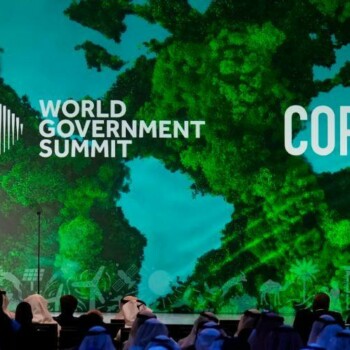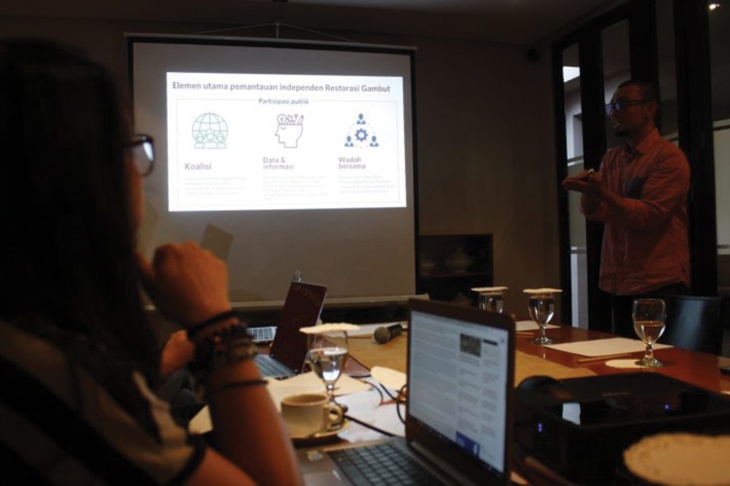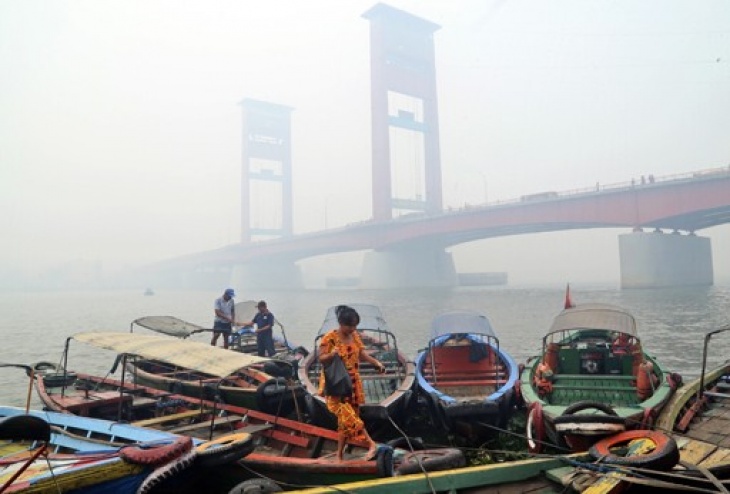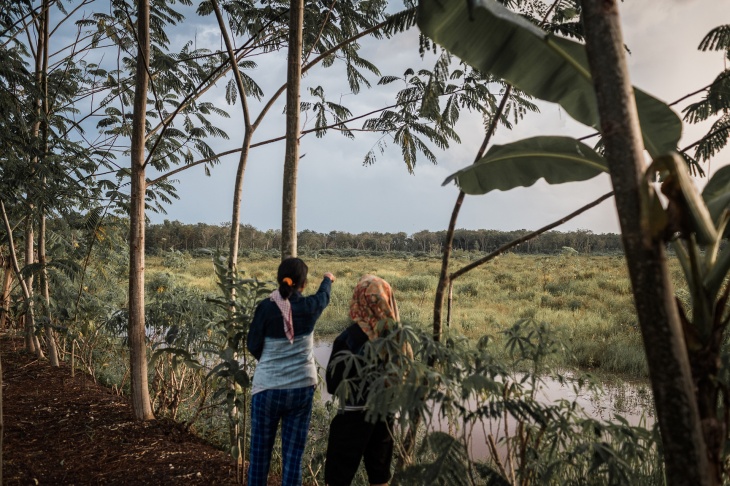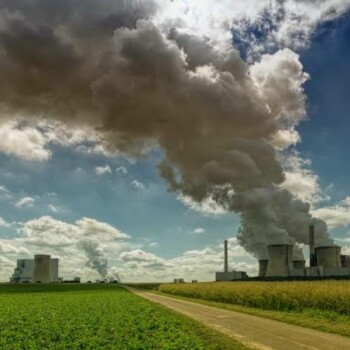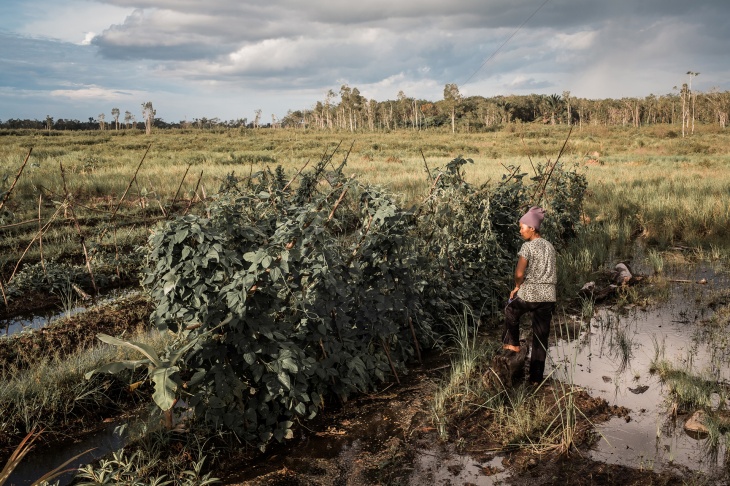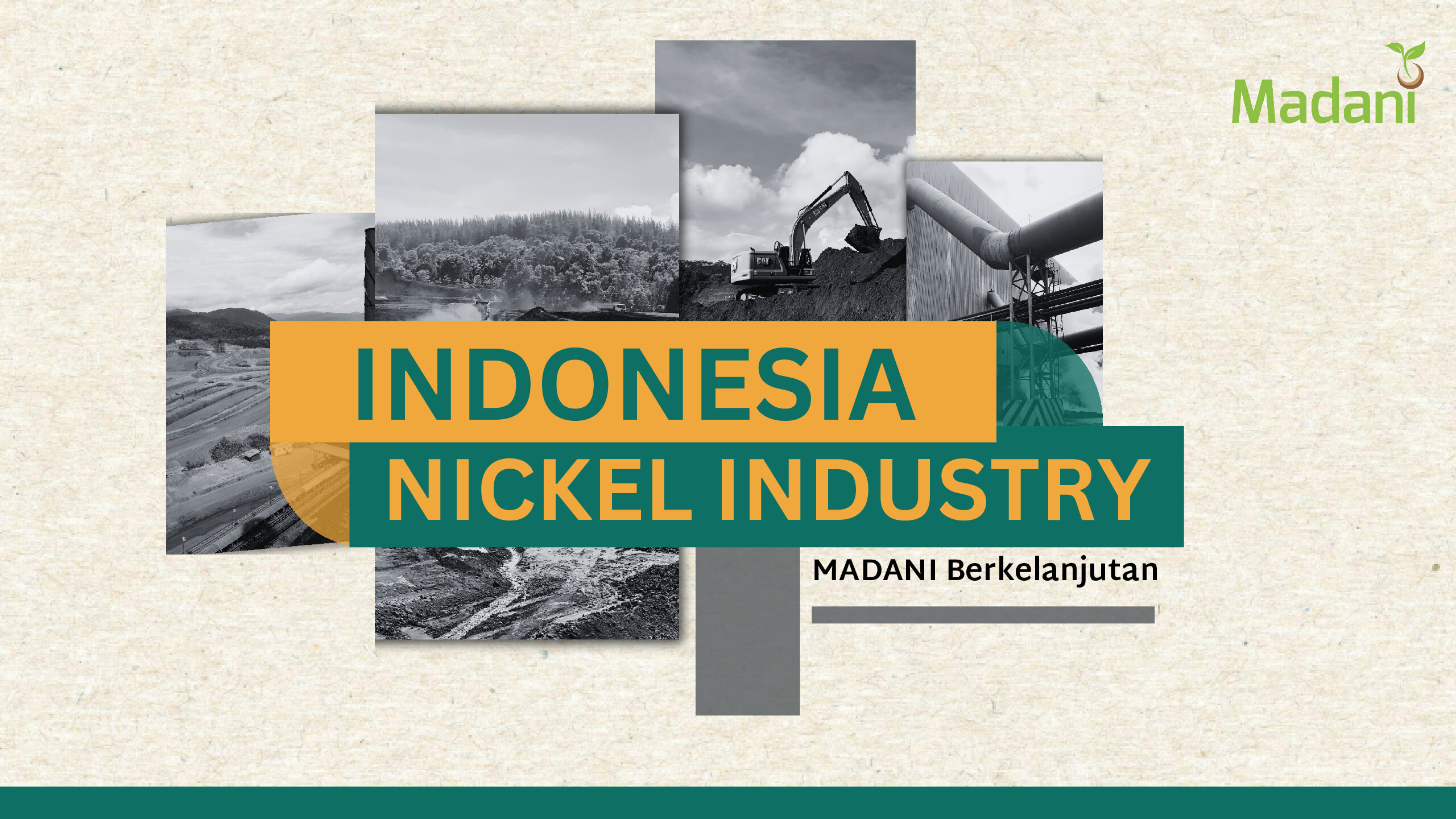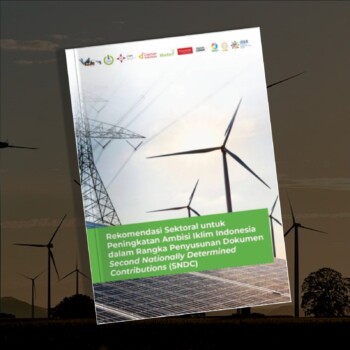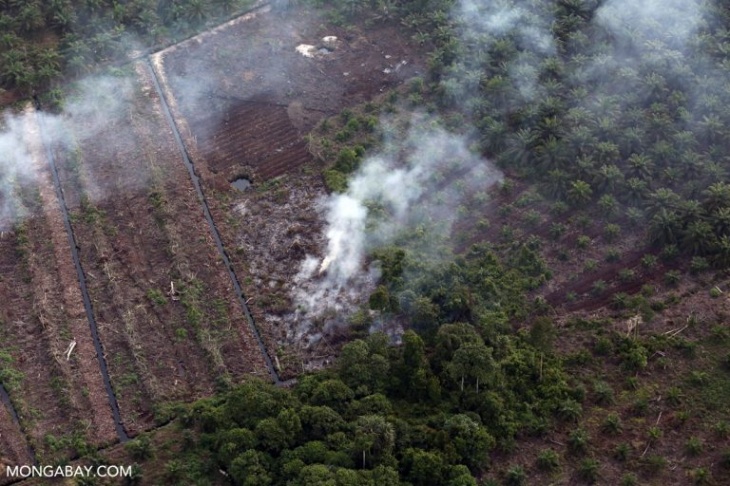
Teguh Surya, executive director of the environmental NGO Yayasan Madani Berkelanjutan, said he was confident the BRG was doing its job, but that there was no way for the public to verify whether it was having any effect.
JAKARTA — Forest fires are underway in Indonesia as the rainy season tails off, marking the return of potentially widespread burning that threatens to once again blanket parts of the country in a toxic haze and belch out huge volumes of carbon dioxide.
Authorities reported that fires had flared up in the two Sumatran provinces of Riau and South Sumatra, and in the Bornean provinces of West and Central Kalimantan. Twenty-three of the 90 hotspots recorded across the country were in West Kalimantan, where thick smoke blanketed the provincial capital Pontianak and disrupted flights.
In Riau, one of the hardest-hit regions during the particularly disastrous 2015 season, fires have razed 6.4 square kilometers (2.5 square miles) of land, an area double that of New York’s Central Park.
All four affected provinces have declared a state of emergency. This will allow them “better access [to resources] to combat forest fires,” including firefighters and funding from the central government, said Sutopo Purwo Nugroho, a spokesman for the National Disaster Mitigation Agency (BNPB).
The state of emergency in Riau and Central Kalimantan will run until May, while in South Sumatra and West Kalimantan it will be maintained until October and December, respectively.
Threat to Asian Games
Authorities are particularly concerned about the return of the fire season this year, when Indonesia will host tens of thousands of athletes and visitors for the Asian Games that run from Aug. 18 to Sept. 2. The event will be co-hosted by Jakarta and Palembang, the capital of fire-hit South Sumatra.
The selection of Palembang as a host city has long been deemed risky, given the propensity for fires in the region. Forty-four percent of land and forest fires in Indonesia since 2011 have occurred in the provinces of South Sumatra, Riau and Central Kalimantan, according to analysis by the think-tank World Resources Institute (WRI).
Nearly all these fires are human-caused, sparked in large part by slash-and-burn clearing of forests to make way for oil palm and pulpwood plantations. The draining of carbon-rich peat swamps, rendering them highly combustible, also serves to accelerate the spread of fires and intensifies the burning and haze. Combined with the onset of the dry season, the fires can quickly grow out of control and spread.
This year’s dry season for the southern region of Sumatra is expected to take hold from June until September, coinciding with the Asian Games. It’s during this period that the fires will intensify, Sutopo said.
The threat has compelled President Joko “Jokowi” Widodo to instruct all authorities to prepare for the worst.
“Don’t let this event be marred by haze and forest fires that will hurt [our] image and disrupt flights,” he said in a meeting in Jakarta in early February. “We have to work hard so that the Asian Games run smoothly without any problems from forest fires.”
He also repeated a warning he first made in 2016 to fire officials from the military and the police to be on top of their game.
“If there are fires in your regions and they’re not handled well, the rule is still the same: dismissal,” Jokowi told the officials gathered at the meeting.
Preventive measures
Some safeguards have been put in place since 2015 to prevent a repeat of the devastating fires that year that razed huge swaths of land and generated some of the worst haze on record. Smoke from the fires sickened half a million Indonesians, per government estimates, and drifted into neighboring countries. At the height of the disaster, the daily emissions of carbon dioxide as a result of the burning exceeded those from all U.S. economic activity.
Among the fire-prevention policies that have been issued since then are a nationwide ban on clearing peatlands; the establishment of community-based fire prevention initiatives; and a requirement for companies to protect and preserve carbon-rich peatlands that fall within their concessions.
The government also plans to restore 20,000 square kilometers (7,720 square miles) of drained peatlands across the country by 2020. The idea is that rewetting the peatlands will make them less likely to catch fire.
To lead the nationwide efforts, Jokowi established the Peatland Restoration Agency (BRG) in early 2016. By the end of 2017, the agency had overseen the rewetting of 2,000 square kilometers of peatland, half by itself and the other half by NGOs and companies.
Environmental activists have questioned the effectiveness of the BRG’s work, citing a lack of transparency.
Teguh Surya, executive director of the environmental NGO Yayasan Madani Berkelanjutan, said he was confident the BRG was doing its job, but that there was no way for the public to verify whether it was having any effect.
“For the restoration work to be effective, the location has to be on point,” he said. “Who determines the location, and what’s the [restoration] method? If the determination of the location is done carelessly, then it’ll fail. The president has to check: if the peatlands have been rewetted, where are they located?”
This year already, there have been fire reports in at least two areas that the BRG claims to have restored. One is in Lukun village in Riau province, where fires have been burning since Feb. 9. The BRG says the fires are not in areas where it has blocked peat drainage canals, but instead are located in nearby sago plantations.
The second report of fires is also in Riau, in the village of Mundam, where the BRG has built 12 canal-blocking units, according to Teguh. BRG head Nazir Foead was scheduled to visit the area on Feb. 23 to verify the report.
As part of its wider plans, the BRG says it is in the process of checking the fire-prevention infrastructure it has already built, to gauge whether it’s working as intended, Nazir said.
“We’ll fix them immediately if there’s anything broken,” he told Mongabay at his office in Jakarta. “And we’ll see the fire spots and how far they’re located from the rewetting infrastructure that we’ve built. If the infrastructure is deemed insufficient, then we’ll build more.”
In an attempt to monitor the progress of peat restoration efforts in the country, Yayasan Madani Berkelanjutan and other NGOs and think tanks, including WRI Indonesia, have set up an online platform called Pantau Gambut, which features an interactive map onto which various data points can be overlaid. These include hotspots, oil palm and pulpwood plantations, and the BRG’s own map.
“Without adequate public monitoring, it’s impossible for the [peat restoration] target to be achieved because there’s no sense of ownership,” Teguh said.
Lessons from 2015
Rewetting peatland is a far more effective means of tackling the fire issue than deploying firefighters to put out blazes once they start, Teguh said. He pointed to the biomass- and carbon-rich nature of peatland that made it particularly combustible, as well as the remote location of much of Indonesia’s peat forests that make it virtually impossible to contain the spread of fires, as was the case in 2015.Firefighters sent to put out the blaze in Lukun village faced this problem too, according to Raffles B. Panjaitan, the director of fire mitigation at the Ministry of Environment and Forestry. Just to reach the location required traveling several hours by boat.
“With no clean water, they had to use water from the peatland,” Raffles said in a statement. “And they had to walk for about 1.5 kilometers [1 mile] from where they were staying to reach the fires.”
Elim Sritaba, the director of sustainability and stakeholder engagement at Asia Pulp and Paper (APP), which operates vast pulpwood plantations, said the company faced a similar experience when dealing with the 2015 forest fires. APP, Indonesia’s largest pulp and paper producer, was blamed for much of the fires that enshrouded the region that year.
In anticipation of this year’s fire season and the threat it poses to the Asian Games, Elim said APP would focus its attention on Ogan Komering Ilir district, a peat region in South Sumatra where the firm has invested in a massive new pulp mill.
“We’re also increasing our investment. Our fire department asked for a $2 million increase in budget,” she told Mongabay at her office in Jakarta. “They wanted to increase the number of patrol towers and we also wanted to install cameras in some high-risk spots.”
Elim said the company had not been prepared for the sheer scale of the fires in 2015, which she said came from outside APP’s concessions and were supercharged by strong winds and the El Niño weather cycle.
“In 2015, the wind was so strong and because it was dry, the wind turned into a cyclone,” she said. “By the time the fires came [to our concessions], they were 2 kilometers [1.2 miles] in width and 1 kilometer [0.6 miles] in height. And the fires were circling. So our fire experts told us that not even the best firefighters could extinguish a fire that big, only God could.”
Source: Mongabay.com, February 26, 2018.

